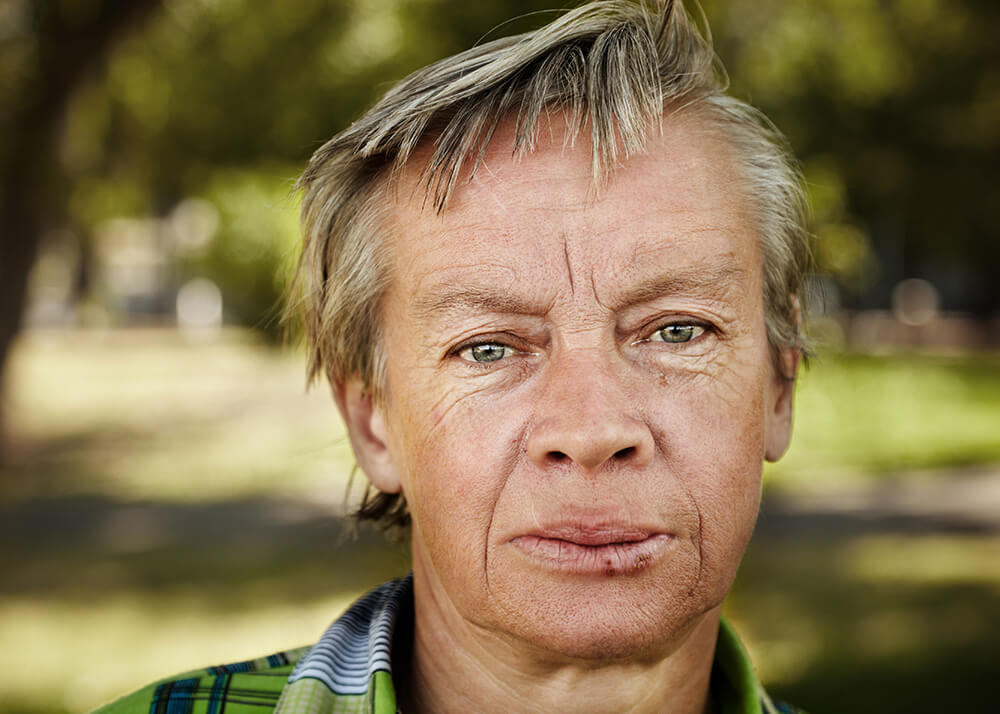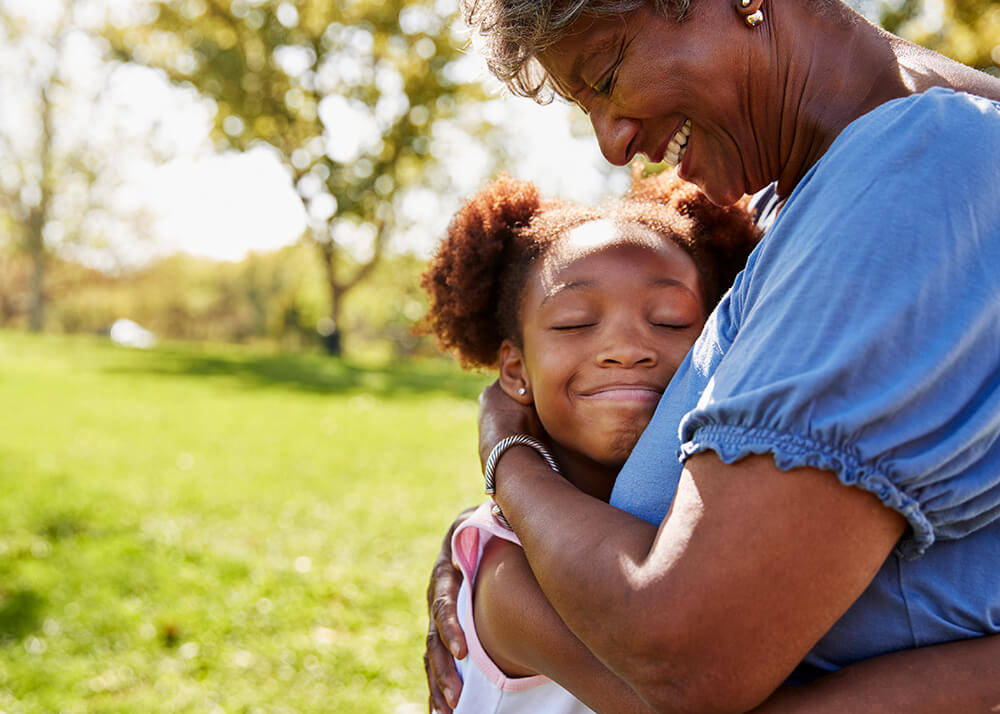Homelessness
“Homelessness can be like a swimming pool. There’s a deep end and a shallow end. For the people who are struggling with tents or who are not housed, they’re at the deep end of the pool. People in the shallow end may have a roof over their heads; they might be couchsurfing; they might be in an RV; they might be housesitting but they’re still homeless. That’s why we need support for more housing helping people in all dire situations.”

Guitar Whitfield
Oakland Affordable Housing Activist with lived experience
California’s homeless population is disproportionately Black, brown, LGBTQ+, foster youth, justice-system involved, people with disabilities, and other marginalized populations. The largest sub-population are single adults.
Contrary to popular belief, only a third of people experiencing homelessness have been diagnosed with a serious mental illness or substance use disorder, often developed during the course of their experience with homelessness.
Despite California voters naming homelessness and housing affordability as their top concerns, this humanitarian issue has only worsened in recent years with an increase of over 17% from 2017 to 2019.
What is Homelessness

Homelessness is defined as living in a place not meant for human habitation, in emergency shelter, in transitional housing, or exiting an institution where a person temporarily resided.
Homelessness is subcategorized and defined by different levels based on timed conditions in an unstable living arrangement.

At risk of homelessness is defined as those who will lose primary residence within 14 days and have nowhere else to go and have no resources or support networks to obtain permanent housing.

Domestic violence and homelessness. As the National Alliance to End Homelessness describes, a “domestic violence experience is common among youth, single adults, and families who become homeless. For many, it is the immediate cause of their homelessness. Survivors of domestic violence may turn to homeless service programs seeking a safe temporary place to stay after fleeing an abusive relationship. Others may turn to homeless service programs primarily because they lack the economic resources to secure or maintain housing after leaving an abusive relationship.”

Chronic Homelessness (CH) is used to describe people who have experienced homelessness for at least a year — or repeatedly — while struggling with a disabling condition such as a serious mental illness, substance use disorder, or physical disability.

CH can also include a person leaving an institution where they stayed for less than 90 days with the condition that they still meet the above prior to entering. Aside from individuals, families can be considered chronically homeless if the head of household meets the above definition.
Statistics
Current accurate and comprehensive data on homelessness rates, barriers and access to services is critical to understanding the systemic and social factors that lead to homelessness.
In 2020, there were more than half a million people experiencing homelessness in the United States, a majority of which were individuals, while the rest were people in families with children.
- There are 580,466 people experiencing homelessness in the U.S.
- Individuals make up 70% of the homeless population
- Unaccompanied youth (under age 25) account for 6% of the larger group
- Families with children make up 30% of the homeless population
- Men and boys make up 70% of those experiencing homelessness
- Women and girls make up 13% of those experiencing homelessness

Statistics
Current accurate and comprehensive data on homelessness rates, barriers and access to services is critical to understanding the systemic and social factors that lead to homelessness.
In 2020, there were more than half a million people experiencing homelessness in the United States, a majority of which were individuals, while the rest were people in families with children.
- There are 580,466 people experiencing homelessness in the U.S.
- Individuals make up 70% of the homeless population
- Unaccompanied youth (under age 25) account for 6% of the larger group
- Families with children make up 30% of the homeless population
- Men and boys make up 70% of those experiencing homelessness
- Women and girls make up 13% of those experiencing homelessness
Homelessness in America
About 34 million people in the United States live in poverty. As a result, more than 10% of the U.S population struggles to afford necessities such as housing. In 2020, 580,466 Americans experienced homelessness. Given the large number of people living in poverty, the risk of homelessness is high. Uncertainty or chance could force any of those 34 million people living in poverty to experience homelessness. The need for more housing is evident and for the first time in five years Continuums of Care have increased their overall number of year-round temporary housing beds (Emergency Shelter, Safe Haven, and Transition Housing), a 2% increase from the previous year. Similarly, over the last five years there was a 20% growth in permanent housing (Permanent Supportive Housing, Rapid Re-housing and other) nationwide.
Californians Experiencing Homelessness
Although California accounts for only 12% of the United States population, one in four Americans experiencing homelessness live in California. On any given night in 2020, 161,548 people experienced homelessness in the state.

It is not only one of the states with the largest increase in homelessness between 2019-2020 (10,270 more people) but also impacts a majority of underrepresented communities.

People of color represent a disproportionate percentage of those experiencing homelessness in our state. While just 6.5% of Californians identify as Black or African American, nearly 40% of California’s homeless population is Black or African American.

Furthermore, in California, 70% of people experiencing homelessness were unsheltered and accounted for more than half of all unsheltered people in the country (51% or 113,660 people). Our state’s breakdown of homelessness populations highlight:

Youth
- About 50% of all unaccompanied youth were counted in major cities. Los Angeles was one of the cities with the largest numbers of unaccompanied youth in the country, reporting 3,098 people under the age of 25 and homeless on their own.

Veterans
- California accounted for 31% of all veterans experiencing homelessness in the United States (11,401 veterans) and more than half of all unsheltered veterans (53% or 7,996 veterans).
- California is one of the 3 states with the highest rates of homelessness among all veterans, where 77 of every 10,000 veterans were experiencing homelessness.

Chronic Homelessness
- 4 of every 10 individuals with chronic patterns of homelessness in the United States were in California (48,812 people).
- California (84%) is one out of the ten states where more than two-thirds of chronically homeless individuals were staying in unsheltered locations.
Causes of Homelessness
Homelessness may happen to anyone as a result of difficult, untenable circumstances such as job loss, eviction, divorce, or a health crisis. It affects people from all walks of life and backgrounds. The majority of California’s homeless population have not traveled here from other states but hail from their local region. In fact, local surveys suggest people living on the streets are typically from the surrounding area.
Homelessness and housing insecurity are caused by a combination of economic and structural factors, which you can read about here.
Solutions
Housing California advances evidence-based solutions to end homelessness. Click here to learn more.

Causes of Homelessness
Homelessness may happen to anyone as a result of difficult, untenable circumstances such as job loss, eviction, divorce, or a health crisis. It affects people from all walks of life and backgrounds. The majority of California’s homeless population have not traveled here from other states but hail from their local region. In fact, local surveys suggest people living on the streets are typically from the surrounding area.
Homelessness and housing insecurity are caused by a combination of economic and structural factors, which you can read about here.
Solutions
Housing California advances evidence-based solutions to end homelessness. Click here to learn more.
“When I see a person struggling without a home, I stop and put myself in their shoes. They are a human being with a beating heart like mine and ask ‘how can I help?’ Let compassion and conviction guide your next steps.”

Ruby Smith
RUN leader
